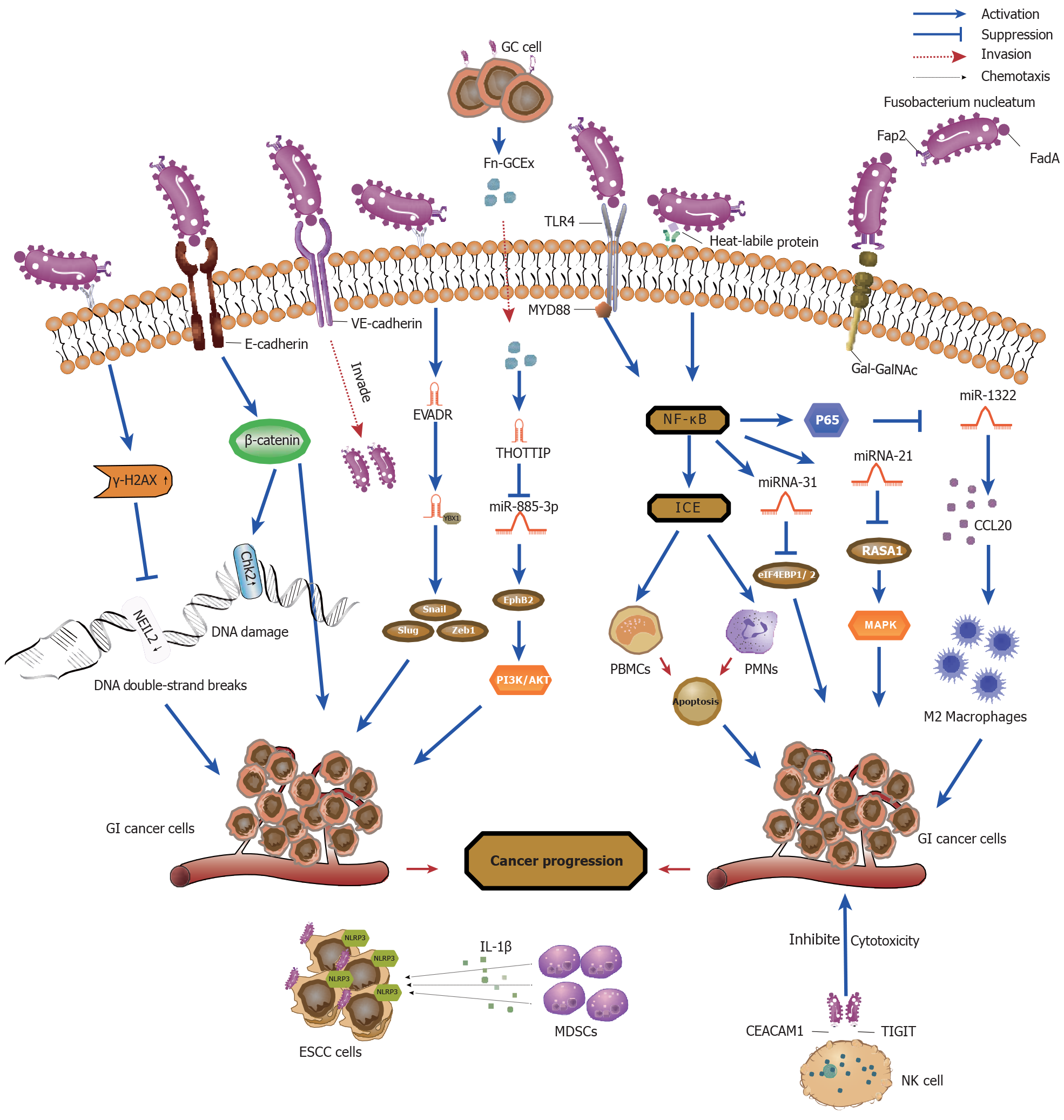Copyright
©The Author(s) 2024.
World J Gastrointest Oncol. Jun 15, 2024; 16(6): 2271-2283
Published online Jun 15, 2024. doi: 10.4251/wjgo.v16.i6.2271
Published online Jun 15, 2024. doi: 10.4251/wjgo.v16.i6.2271
Figure 1 Underlying mechanism of Fusobacterium nucleatum pathogenesis in gastrointestinal malignancies.
Fusobacterium nucleatum (F. nucleatum) adheres to and invades tumor cells through adhesins FadA on its surface, releasing virulence factors that promote the progression of gastrointestinal malignancies. Binding of F. nucleatum to receptors on the surface of tumor cells promotes the malignant transformation of tumor cells through a variety of mechanisms, including the induction of DNA damage, modulation of the immune microenvironment of tumors, and regulation of non-coding RNA expression. GC cells: Gastric cancer cells; GI cancer cells: Gastrointestinal cancer cells; Fn-GCEx: Exosomes secreted by F. nucleatum-infected GC cells; TLR4: Toll-like receptor 4; Gal-GalNAc: D-galactos-β (1-3)-N-acetyl-D-galactosamine; ESCC cells: Esophageal squamous carcinoma cells; MDSCs: Myeloid suppressor cells; PBMCs: Peripheral blood mononuclear cells; PMNs: Polymorphonuclear cells; NK cell: Natural killer cell.
- Citation: Yu LC, Li YP, Xin YM, Mao M, Pan YX, Qu YX, Luo ZD, Zhang Y, Zhang X. Application of Fusobacterium nucleatum as a biomarker in gastrointestinal malignancies. World J Gastrointest Oncol 2024; 16(6): 2271-2283
- URL: https://www.wjgnet.com/1948-5204/full/v16/i6/2271.htm
- DOI: https://dx.doi.org/10.4251/wjgo.v16.i6.2271













